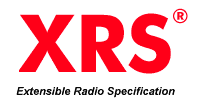



|
|
|
|
Antenna Selector
The user is expected to provide the actual antenna distributor (an RF switching device), which can be controlled either by sending a specified code to a selected serial or parallel port, or activated by launching an application. Clicking the New Antenna button brings out a dialog box which makes it possible to add a new antenna to select from. The user can name the antenna and specify how the antenna is controlled: the port type and data sent to the port, or the name of the application associated with a particular antenna. The actual antenna selection is then done by clicking on the corresponding icon. Additional facilities include the selection of the display method of the antennas (either large or small icons, or a list with full description), and Always On Top function. |
|
Notes on Hardware Interfacing
The plug-in makes it possible to connect the antenna switching box either via parallel (printer) or a serial ports. The ports can be specified either as "Logical ports" (i.e. COM1, COM2, etc. for serial ports; LPT1, LPT2, etc. for parallel ports), or as "Hardware ports". The "Hardware port" alternative is more universal. Under normal circumstances, the LPT1 parallel port has an assigned address #378. Serial ports COM1 and COM2 typically have addresses #3F8 and #2F8, respectively. However, many BIOSes make it possible to change these addresses. The actual hardware address associated with a logical port can be obtained using the "resources" tab in Windows device manager. If logical access to an LPT port is used, then BIOS setting for the LPT port should be SPP, or Normal. If the port is set as ECP, the plug-in will show a timeout error message. Errors While accessing logical ports, the following errors can occur: "Unable to open port XXXX" - the port XXXX doesn't exists in the system, or it is already reserved by other application. "Error NNN while writing to port XXXX" - Windows fails to send data for some reason. NNN is standard windows error code. "Timeout writing to port XXXX" - Standard communication protocols are not satisfied. For example, the status pins on LPT port are set to an error state, or the parallel port BIOS setting is set to ECP. These errors cannot happen if direct "Hardware Port" access is used. Connecting Relays to the Parallel Port The simplest arrangement for the antenna switch would be to connect the antenna relays to the printer port, using ordinary NPN transistors as drivers. The parallel port type should be "Standard", not SPP or EPP (this is set in the BIOS). Care must be taken for the various status signals of the Centronics standard to be satisfied (otherwise the plug-in may indicate an error condition). If a DB25 parallel port connector is used, then the connection could be as follows:
(*) denotes "active low" signals The D0-D7 pins can be connected to NPN transistors for switching relays via say 1k resistors to base. Interfacing Examples To connect an antenna switching relay to the printer port, you need a transistor, a diode and a resistor for each relay. An example of a simple interfacing circuit is below.
The transistor type and the base resistor value is not critical and depends on the voltage and current requirements of the relay used. If more relays are needed, a more elegant interfacing circuit can be constructed using the ULN2803A transistor array (or equivalent):
This circuit can drive up to 8 relays, with maximum total current 0.5A. Note that for both above schematics, you need to use the Hardware Port access (in Windows 9x/NT/2000). The usual port address is #378. If you wish to use Logical Port interfacing, then the circuit must support standard communication protocol for the parallel port. A suitable circuit is shown below:
Note that this simple circuit may not work with some types of printer ports, in particular under Windows NT/2000. In such case, Hardware Port interfacing is recommended. |
